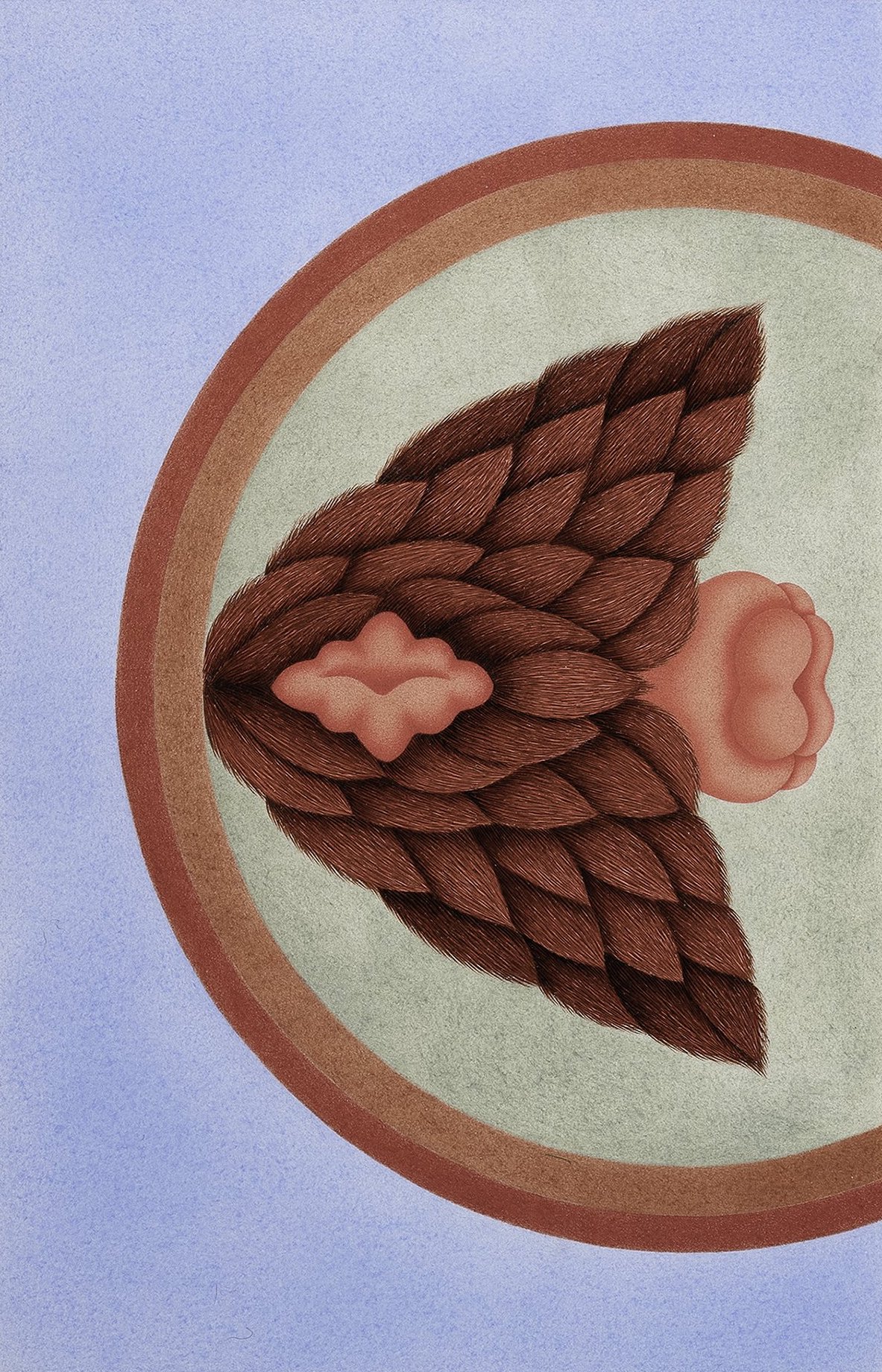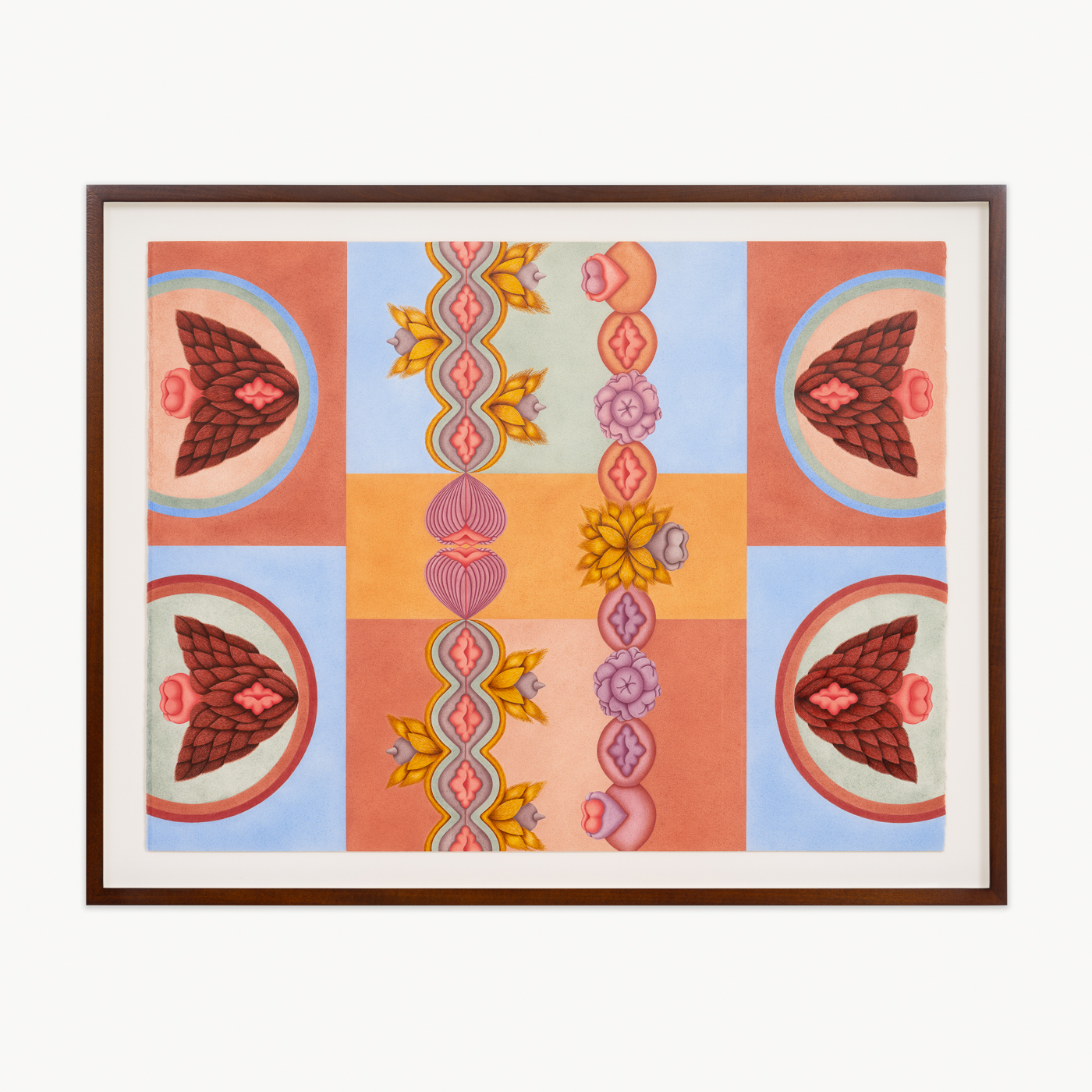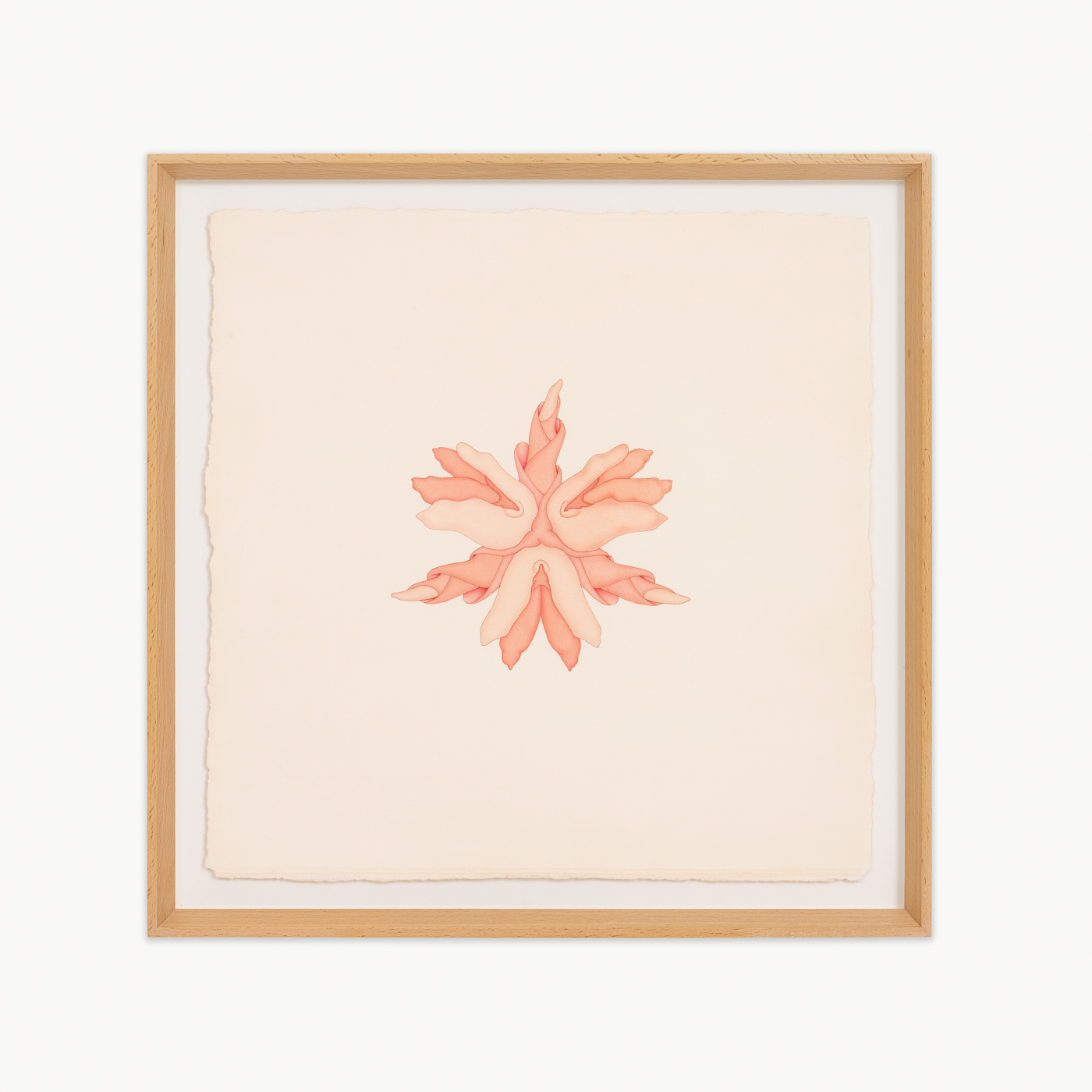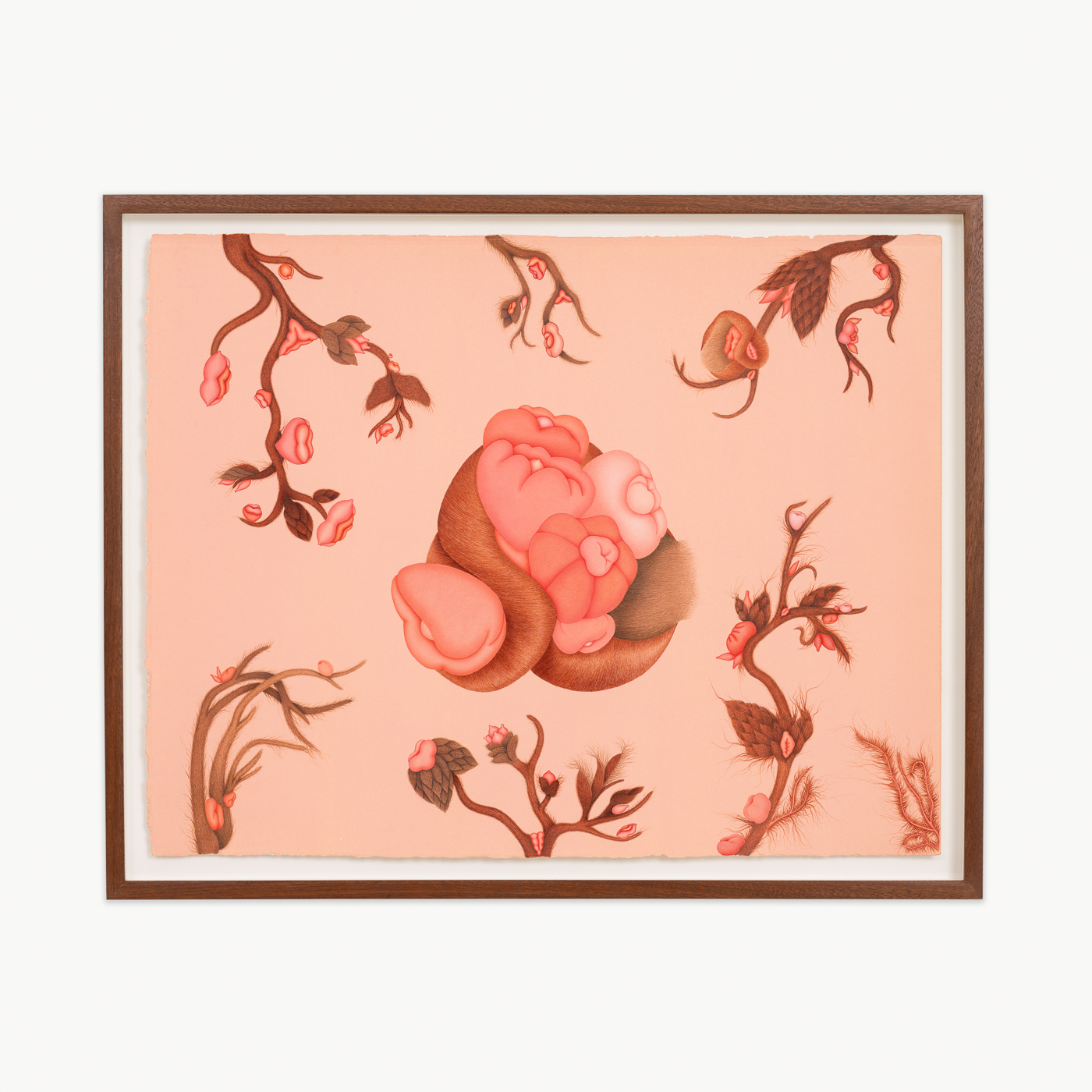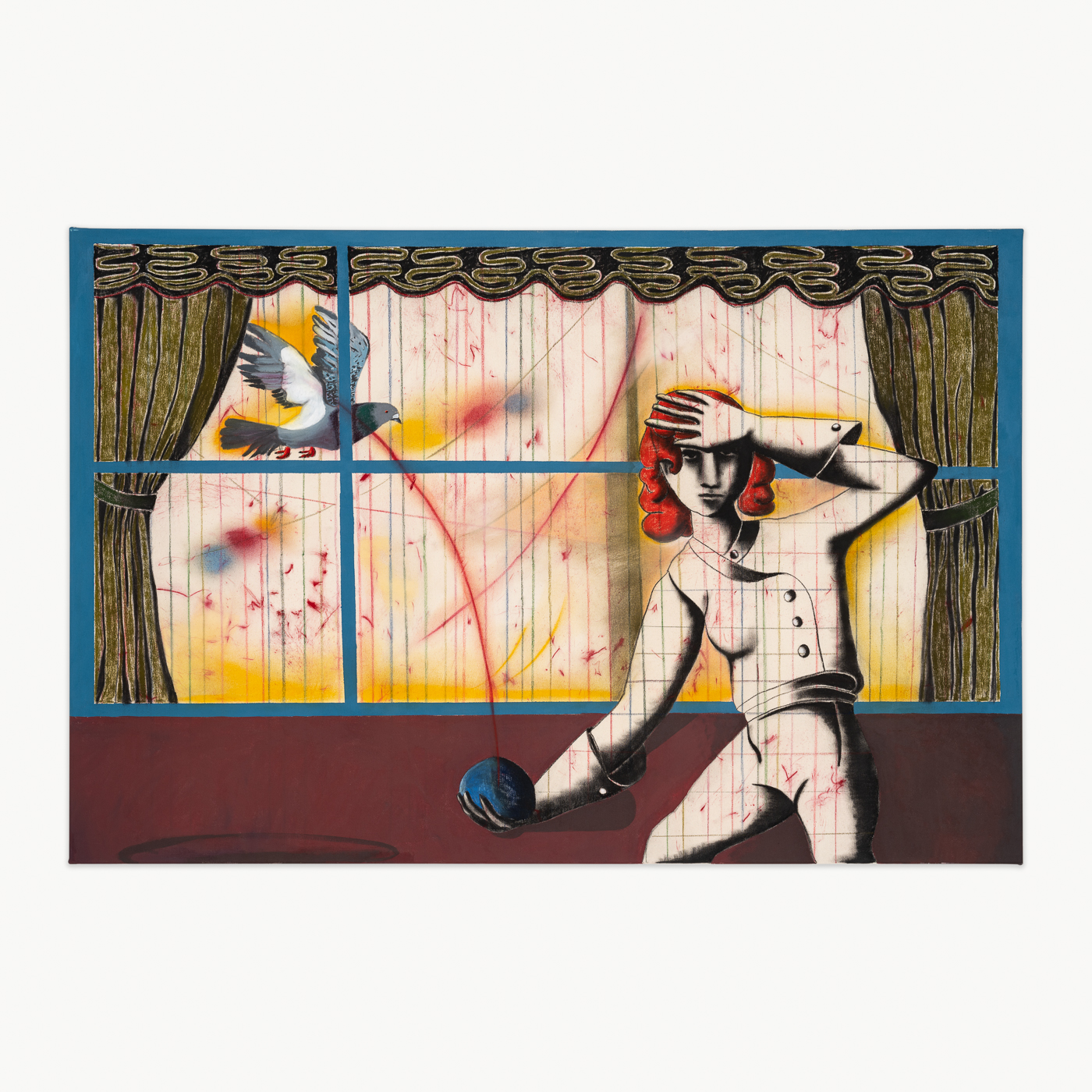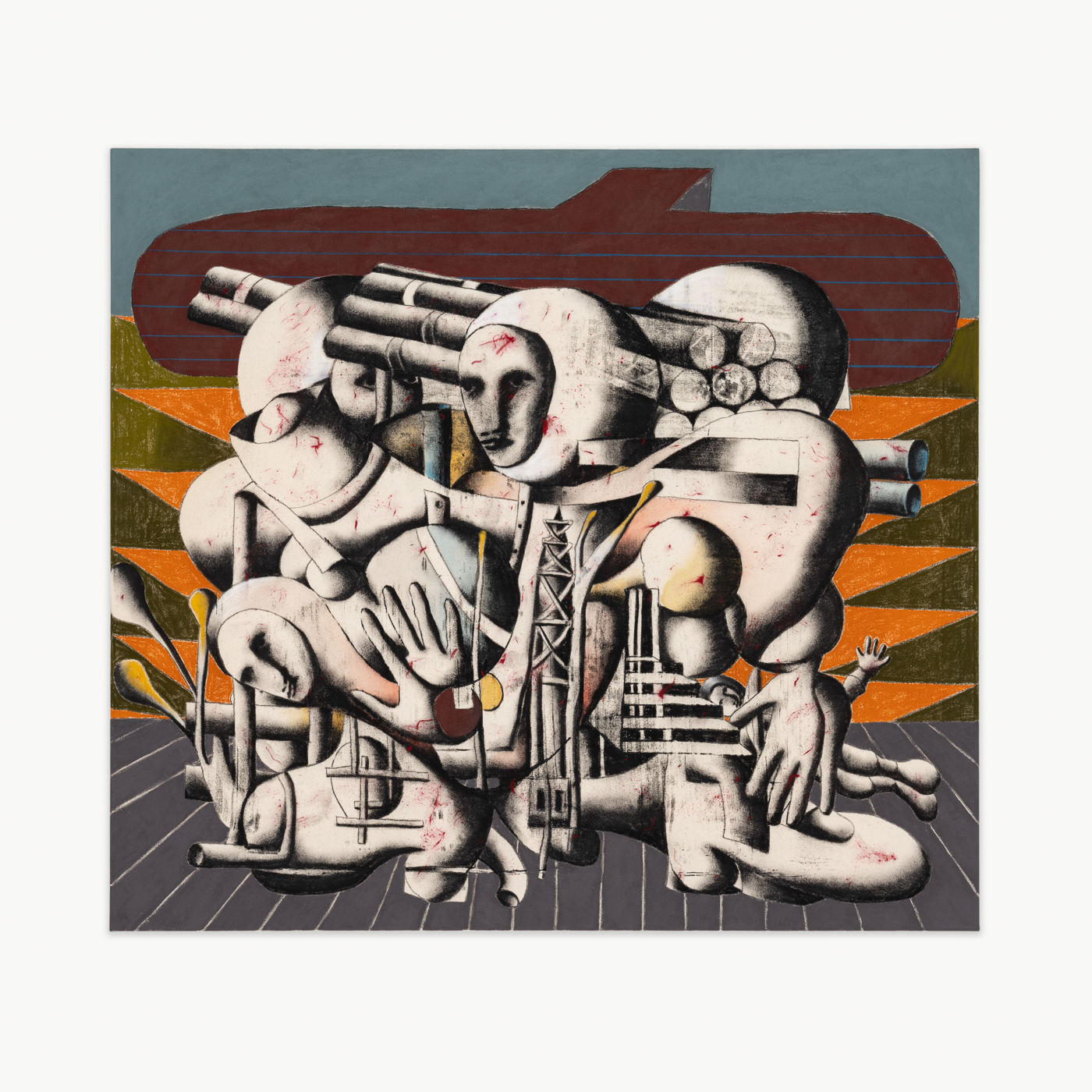Desire is nourished by what doesn‘t yet exist
—Han, Byung-Chul
The Artist Room is delighted to present Inferno of the Same, a two-person exhibition including new and recent works by Ferdinand Dölberg (b.1998, Berlin) and Ceyda Karatas (b.1989, Istanbul).
The exhibition takes its name from philosopher Byung-Chul Han’s publication The Agony of Eros (2017). Considering the nuances of human interaction in what he names burnout society, the book asks why technologically mediated social interaction has led to a contemporary condition characterised by ‘fetishised individualism’. In harried contemporary life, the author argues, our satisfaction is largely drawn from efficiency, small pleasures, and instant gratification; often catalyzed by the immediacy of digital technology. Han suggests that the pace of life – and our lack of patience, focus and concentration – lead to satisfaction for the ‘comfortable, safe, and familiar’. In other words, contentment with endlessly repeating forms of experiences and entertainment that minorly vary: the Inferno of the Same. As such, this exhibition observes how Dölberg and Karatas utilise and expand on this notion of repetition to consider alternative ways of being.
